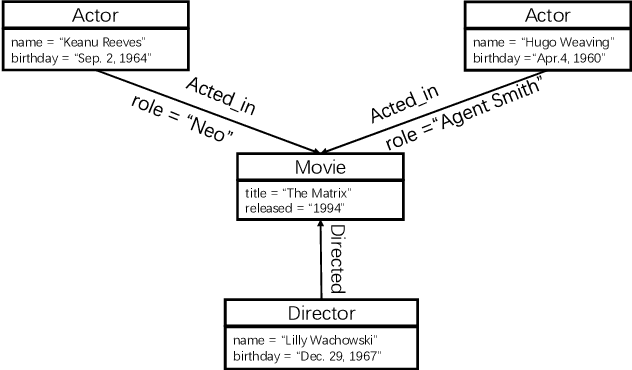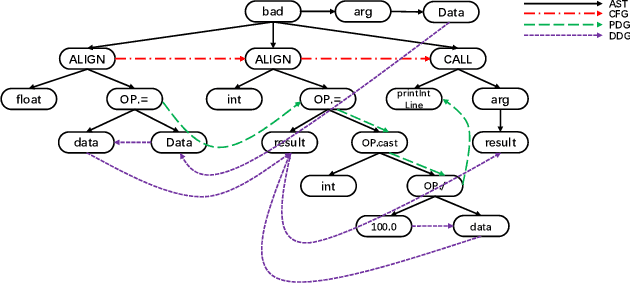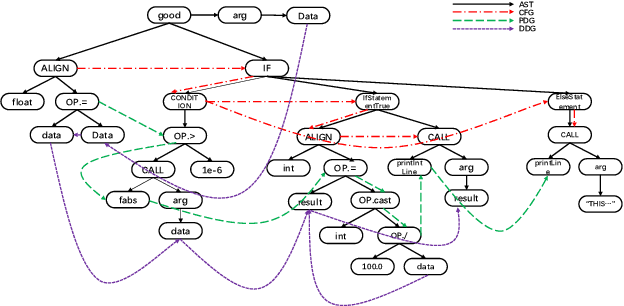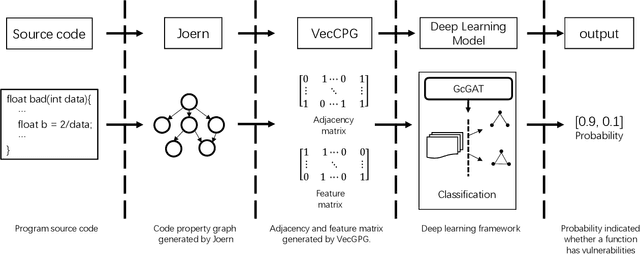GraphEye: A Novel Solution for Detecting Vulnerable Functions Based on Graph Attention Network
Paper and Code
Feb 05, 2022



With the continuous extension of the Industrial Internet, cyber incidents caused by software vulnerabilities have been increasing in recent years. However, software vulnerabilities detection is still heavily relying on code review done by experts, and how to automatedly detect software vulnerabilities is an open problem so far. In this paper, we propose a novel solution named GraphEye to identify whether a function of C/C++ code has vulnerabilities, which can greatly alleviate the burden of code auditors. GraphEye is originated from the observation that the code property graph of a non-vulnerable function naturally differs from the code property graph of a vulnerable function with the same functionality. Hence, detecting vulnerable functions is attributed to the graph classification problem.GraphEye is comprised of VecCPG and GcGAT. VecCPG is a vectorization for the code property graph, which is proposed to characterize the key syntax and semantic features of the corresponding source code. GcGAT is a deep learning model based on the graph attention graph, which is proposed to solve the graph classification problem according to VecCPG. Finally, GraphEye is verified by the SARD Stack-based Buffer Overflow, Divide-Zero, Null Pointer Deference, Buffer Error, and Resource Error datasets, the corresponding F1 scores are 95.6%, 95.6%,96.1%,92.6%, and 96.1% respectively, which validate the effectiveness of the proposed solution.
 Add to Chrome
Add to Chrome Add to Firefox
Add to Firefox Add to Edge
Add to Edge